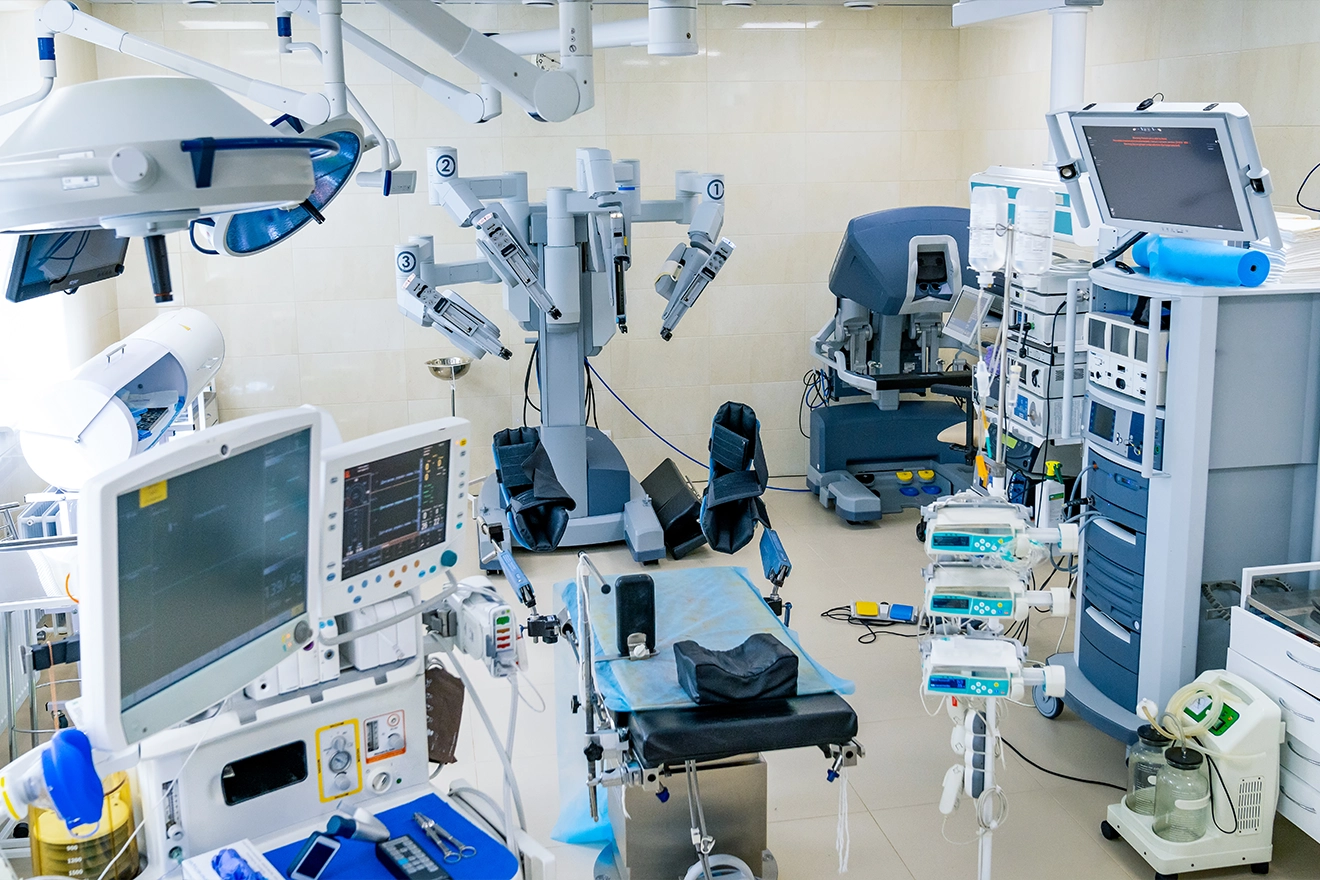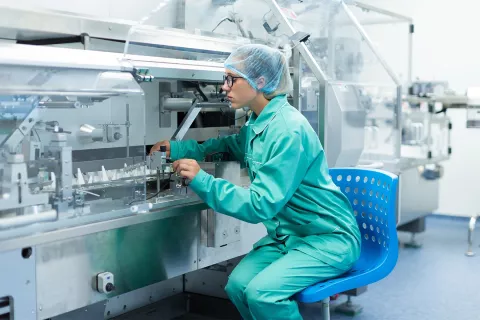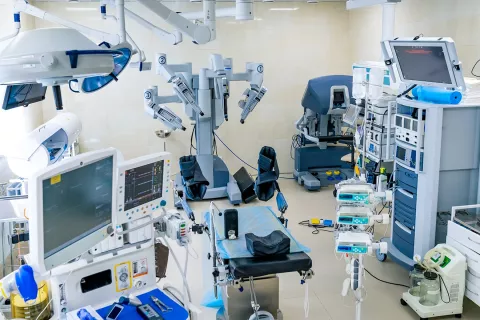
The European medical devices market, being the second largest in the world, is majorly driven by a growing patient population, technological advancements, and increasing healthcare expenditure. However, when it comes to expanding the medical device business into the European geography, a complex web of regulations and recent geopolitical changes adds an extra layer of challenge.
Brexit, Swixit, EU - New Regulations
The ever-evolving EU Regulatory landscape, including Brexit and potential changes in Switzerland (Swixit), is challenging for manufacturers. The new regulations aim to ensure device safety, effectiveness, and patient protection, but they also require a deep understanding of compliance. These regulations demand meticulous attention to detail, robust Quality Management Systems (QMS), and adherence to standards such as ISO 13485.
The current scenario in the European Union (EU), Switzerland, and the United Kingdom (UK) for placing medical devices is undergoing significant changes. The device manufacturers willing to enter these markets must be aware of the changes on an early note. Let us look at a snippet on the current Regulatory scenario of medical devices for these three (03) markets.
Medical Devices Regulatory Landscape in the EU, UK, and Switzerland - Current Scenario
| Regulatory Aspects for Medical Devices | EU | UK | Switzerland |
| Regulatory Authority | National competent Authorities (The list of the competent authorities is published by the EC) | Medicine and Healthcare Products Regulatory Agency (MHRA) | Swissmedic |
| Regulations Applicable | EU MDR 2017/745 (MD/AIMD) IVDR 2017/746 (In Vitro Diagnostic Medical Devices) | Medical Devices Regulations 2002 In Vitro Diagnostic Medical Devices Regulations 2017 | Medical Devices Ordinance (MedDO)
Ordinance on In Vitro Diagnostic Medical Devices (IvDO)
Ordinance
|
| Device Classification | Class I, IIa, IIb and III Class A, B, C, and D | Class I, IIa, IIb and III Class A, B, C, and D | Class I, IIa, IIb and III Class A, B, C, and D |
| Relevant Documents |
EU DoC
Basic UDI, Unique Device Identification (UDI), Labeling and Instructions for Use (IFU).
Manufacturing and design-related documents.
Risk management file in accordance with ISO 14971.
General Safety and Performance Requirements (GSPR) and Conformance to applicable Harmonized Standards.
Verification and validation documents.
Preclinical and clinical data (Biocompatibility, Stability and Usability report, CEP, CER).
Post-market Surveillance (PMS) information.
|
EU DoC
Basic UDI, Unique Device Identification (UDI), Labeling and Instructions for Use (IFU).
Manufacturing and design-related documents.
Risk management file in accordance with ISO 14971.
General Safety and Performance Requirements (GSPR) and Conformance to applicable Harmonized Standards.
Verification and validation documents.
Preclinical and clinical data (Biocompatibility, Stability and Usability report, CEP, CER).
Post-market Surveillance (PMS) information
| EU DoC
CE Certificate
Basic UDI, Unique Device Identification (UDI), Labeling and Instructions for Use (IFU).
Manufacturing and design-related documents.
Risk management file in accordance with ISO 14971.
General Safety and Performance Requirements (GSPR) and Conformance to applicable Harmonized Standards.
Verification and validation documents.
Preclinical and clinical data (Biocompatibility, Stability and Usability report, CEP, CER).
Post-market Surveillance (PMS) information
|
| QMS Requirements | ISO 13485:2016 | ISO 13485:2016 | ISO 13485:2016 |
| Authorized Representative (if applicable) | European Authorized Representative Services (EAR) | United Kingdom Responsible Person (UKRP) | Swiss Authorized Representative (CH-REP) |
| Person Responsible for Regulatory Compliance (PRRC) requirement | Yes | Yes | Yes |
| Applicable Marking | CE Marking | CE/ (United Kingdom Northern Ireland (UKNI) – Northern Ireland CE/UKCA (UK Conformity Assessed) Marking - Great Britain | CE Marking |
| UDI Registrations | Devices are required to be registered in the EUDAMED UDI module, which is expected to be available in Spring 2024. | Follow Global Unique Device Identification Database (GUDID) and submission on EUDAMED (European Database on Medical Devices) | Devices are required to be registered in the Swissdamed UDI module which is expected to be available in Summer 2024. |
| Post-market Surveillance (PMS) Requirements | PMS Plan PMS report, Periodic Safety Update Report (PSUR) Post market Clinical Follow-up (PMCF) in MDR Post-market Performance Follow-up (PMPF) plan and reports in IVDR | PMS Plan PMS Report Trend Reports Periodic Safety Update Report (PSUR) | PMS Plan PMS report, Periodic Safety Update Report (PSUR) Post Market Clinical Follow-up (PMCF) in MDR Post-Market Performance Follow-up (PMPF) plan and reports in IVDR
|
Key Insights to be Noted while Placing your Medical Devices in these Three (03) Markets
The European Union (EU):
Prior to placing a device on the EU market or prior to putting it into service, the device manufacturer shall undertake an assessment of conformity. Devices other than custom-made devices, investigational devices, or devices for performance studies shall bear the CE marking of conformity. For devices other than Class I medical devices or Class A IVDs, the conformity assessment requires the involvement of a Notified Body (NB). Conformity assessment is mostly based on a Quality Management System (QMS) and on assessment of technical documentation by a Notified Body (NB). Manufacturers who are based out of the EU must appoint a European Authorized Representative (EAR) who plays a critical Regulatory role, and the details of the EAR must appear on the device label.
Manufacturers must register themselves as well as their devices in EUDAMED. The registration request of the manufacturers must be approved by the EU AR before being approved by the Competent Authority for issuance of a Single Registration Number (SRN). Manufacturers are responsible for the registration of their devices on EUDAMED. The mandatory use of the system will start six (06) months after the entire EUDAMED system (including all six (06) modules) has been declared fully functional.
Currently, due to the limited capacity of the Notified Bodies (NBs), the transition to the EU MDR is extended until December 31, 2027, for higher-risk devices and December 31, 2028, for medium and lower-risk classes. However, the timelines have been divided into phases as per the device classification. This comes with a certain conditional compliance. For instance, by May 26, 2024, manufacturers of legacy devices are required to have established a Quality Management System (QMS) and submitted an application to an MDR-designated Notified Body (NB), and no later than September 26, 2024, the Notified Body (NB) and the manufacturer should sign a written agreement for the purpose of conformity assessment.
It is advisable to proactively ensure compliance rather than waiting until the deadline to ensure successful compliance.
The United Kingdom (UK):
The manufacturers based out of the EU and Switzerland geography must appoint a UKRP to ensure the continuity of their devices in the UK market. For the Great Britain market, the manufacturers with the EU Medical Devices Directive (EU MDD) or the EU Active Implantable Medical Devices Directive (EU AIMDD) can comply with the CE marking till June 30, 2028. In the case of Northern Ireland, the manufacturers can continue to place their CE-certified products in the market without any limitations. If the manufacturer is placing a non-CE certified product, it can either take a CE-certified route, and in case of its CAB is based out of the UK, the product would receive CE + UKNI marking.
IVDs that are compliant with the EU In Vitro Diagnostic Medical Devices Directive (EU IVDD) can be placed on the market till June 30, 2030. The general medical devices that are compliant with the EU MDR and IVDs that are compliant with the EU IVDR can be placed on the market till June 30, 2030.
Also, self-declared CE-marked Class I medical devices in Great Britain can continue to be placed on the market beyond June 30, 2023, under the following conditions:
- They can be self-declared in accordance with the EU MDR requirements (until June 30, 2030).
- For devices self-declared under MDD requirements before May 26, 2021, and where the Notified Body (NB) involvement was not required under MDD but is required under the EU MDR, can be sold until June 30, 2028. This includes upgraded devices and reusable surgical instruments.
Also, a Class I medical device with a sterile or measuring function and a valid MDD certificate can be placed on the Great Britain (GB) market until June 30, 2028. Custom-made devices that are compliant with the EU MDD or the EU AIMDD can no longer be placed on the Great Britain (GB) market. Please be aware that current regulations permit the use of renewed EU MDR and EU IVDR certificates to market medical devices in Great Britain (GB) until June 30, 2030.
The World Trade Organization (WTO) published a draft on the Post-market Surveillance Requirements Statutory Instrument (PMS SI) on July 26, 2023. The draft mentions that manufacturers must improve data collection in their PMS system, report serious incidents rigorously for early issue detection, and conduct frequent reviews, including for implantable devices, to spot safety trends promptly. It is expected to be applied from mid-2024.
Switzerland:
To place a medical device or an IVD on the Swiss market or make them available on the market, or put them into service, manufacturers must comply with the Medical Devices Ordinance (MedDO) and Ordinance on In Vitro Diagnostic Medical Devices (IvDO) and complete the applicable conformity assessment procedure.
Devices other than custom-made devices, devices exclusively for demonstration and presentation purposes, systems and procedure packs, and investigational devices should bear a conformity marking. The CE-marked medical devices can be imported into Switzerland, may be sold, and distributed.
Swiss Economic Operators (EOs) are required to register themselves with Swissmedic within three (03) months after placing the device on the market. Non-Swiss manufacturers are required to appoint a Swiss Authorised Representative (Swiss AR/CH-Rep) to have their device placed on the market.
Switzerland unilaterally recognizes the EU certificates of conformity for medical devices and follows the EU MDR and the EU IVDR as closely as possible, including labeling and marking requirements.
To conclude, the medical device market in Europe is undergoing significant changes due to Brexit, Swixit, and new regulations in the EU. Manufacturers need to be aware of these changes and take essential steps to ensure compliance. Ensuring accurate Regulatory strategy is one of the key aspects of placing the devices in these markets.
Freyr provides comprehensive Regulatory support to help manufacturers place their medical devices on the EU, UK, and Switzerland markets. Are you willing to market your devices in any of these markets? Do you require end-to-end Regulatory support? Schedule a call with us today! Stay informed. Stay compliant.









